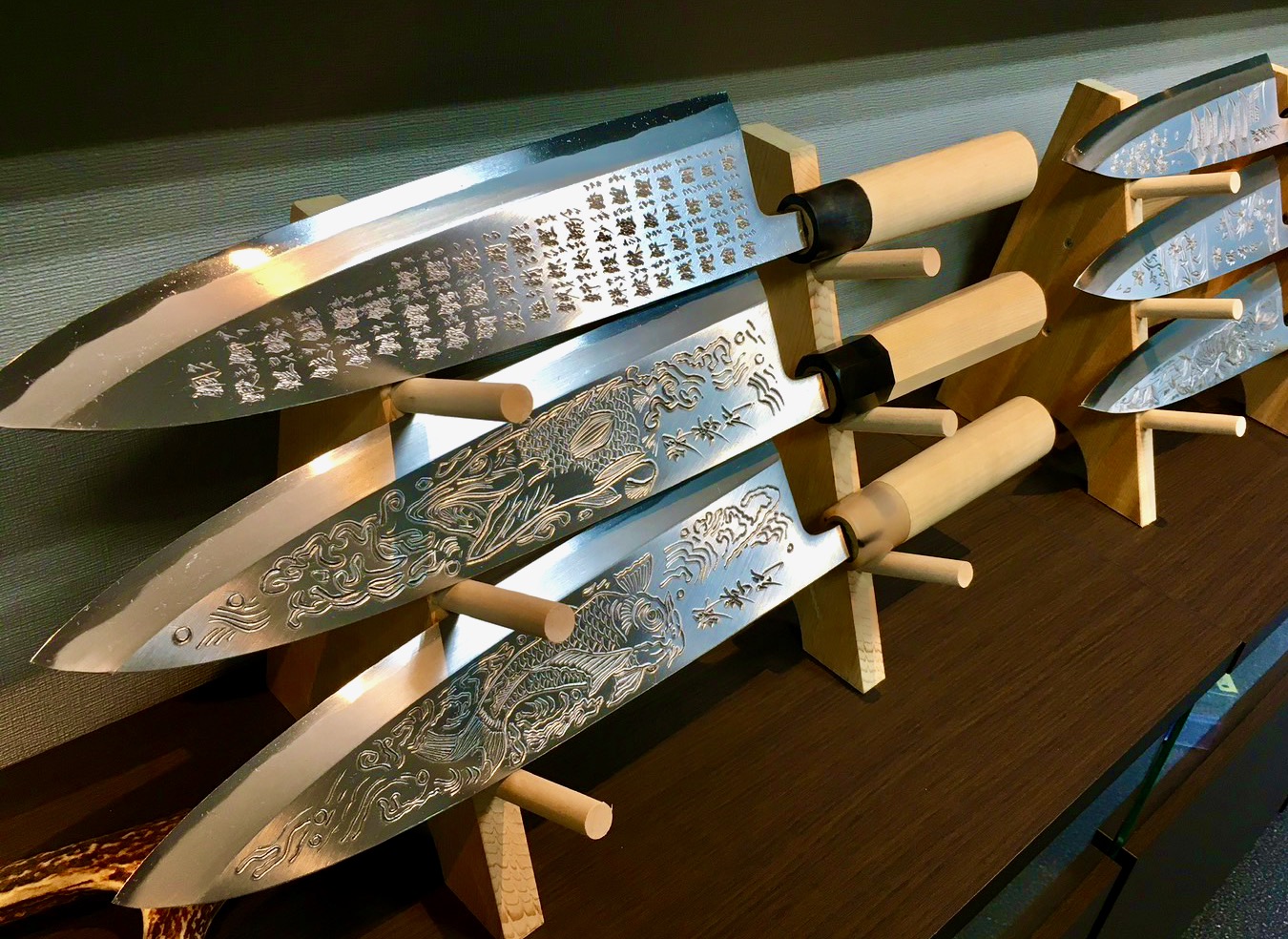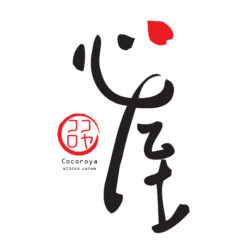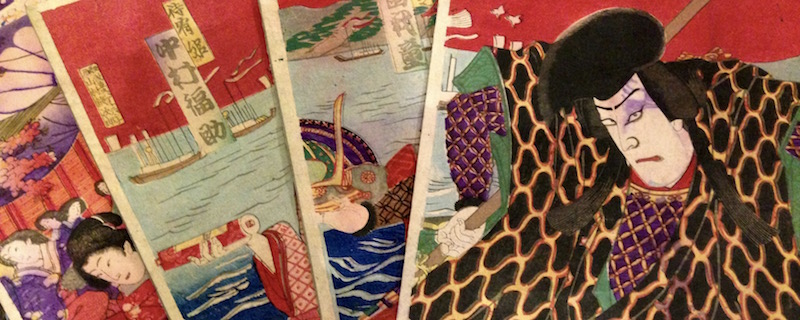Hanga – Woodblock Prints
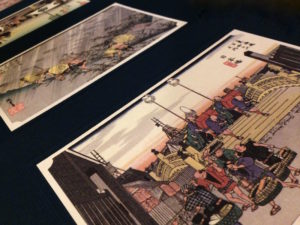 Production of Hanga woodblock prints began around the mid 1600’s and continued through the Edo period. The Ukiyo-e or floating world pictures are perhaps the most well known and the vast majority of these are now owned overseas. Ukiyo-e pictures captured a fleeting moment in time, to celebrate or preserve that moment, and they were mostly bought as a souvenir, as we would buy a picture-postcard today.
Production of Hanga woodblock prints began around the mid 1600’s and continued through the Edo period. The Ukiyo-e or floating world pictures are perhaps the most well known and the vast majority of these are now owned overseas. Ukiyo-e pictures captured a fleeting moment in time, to celebrate or preserve that moment, and they were mostly bought as a souvenir, as we would buy a picture-postcard today.
Interestingly, it was the publishers of the prints that controlled the process and the ‘artists’ were only one part of the production line that created the finished product. Other artists engraved the woodblocks and printers printed the pictures. In fact, the ‘artists’ were more like designers, working for the publishers. It was a fiercely competitive market and misjudging the market had dire consequences for the publishers.
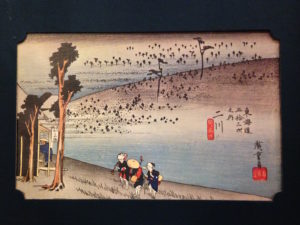 There are many different genre for Hanga, giving them appeal to a very wide audience. Some are of Kabuki theatre scenes and actors, others are of landscapes and nature and others of beauties and erotic scenes. Historical events and scenes from famous stories were also depicted.
There are many different genre for Hanga, giving them appeal to a very wide audience. Some are of Kabuki theatre scenes and actors, others are of landscapes and nature and others of beauties and erotic scenes. Historical events and scenes from famous stories were also depicted.
Many are in bright colours and incorporate fine detail. They often give the appearance of movement within the picture and composition is asymmetrical, as is common with much of Japanese design.
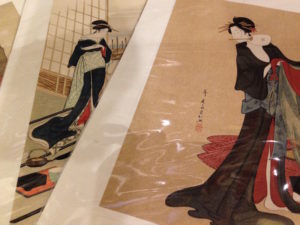 Some Hanga that can be found today are original prints of the time and others are reproductions. Some reproductions are over 100 years old and others are much newer. Some reproductions were printed from re-etched woodblocks and others can be described as a ‘photo’ copy.
Some Hanga that can be found today are original prints of the time and others are reproductions. Some reproductions are over 100 years old and others are much newer. Some reproductions were printed from re-etched woodblocks and others can be described as a ‘photo’ copy.
Our Hanga woodblock prints are all old and their condition varies. Check the description for any imperfections.
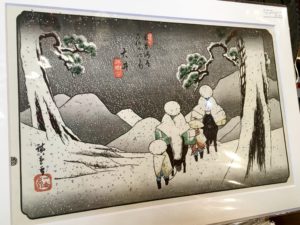 HINT: Mount and frame the Hanga woodblock prints in a plain wooden frame. Generally they look good with white or black mounts.
HINT: Mount and frame the Hanga woodblock prints in a plain wooden frame. Generally they look good with white or black mounts.
